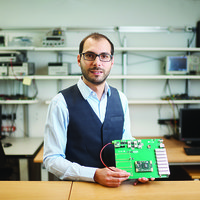Artificial intelligence & robotics
Bo Li
By devising new ways to fool AI, she is making it safer.

Global
Jiwei Li
In the last few months, Google and Facebook have both released new chatbots. Jiwei Li’s techniques are at the heart of both.

Latin America
Renato Borges
Monitoring farms using IoT and AI to help farmers reduce costs and increase yields.

Japan
Masaki Nakada
Developing technologies that support people's general health during this prolonged COVID-19 pandemic.

Global
Manuel Le Gallo
He uses novel computer designs to make AI less power hungry.
